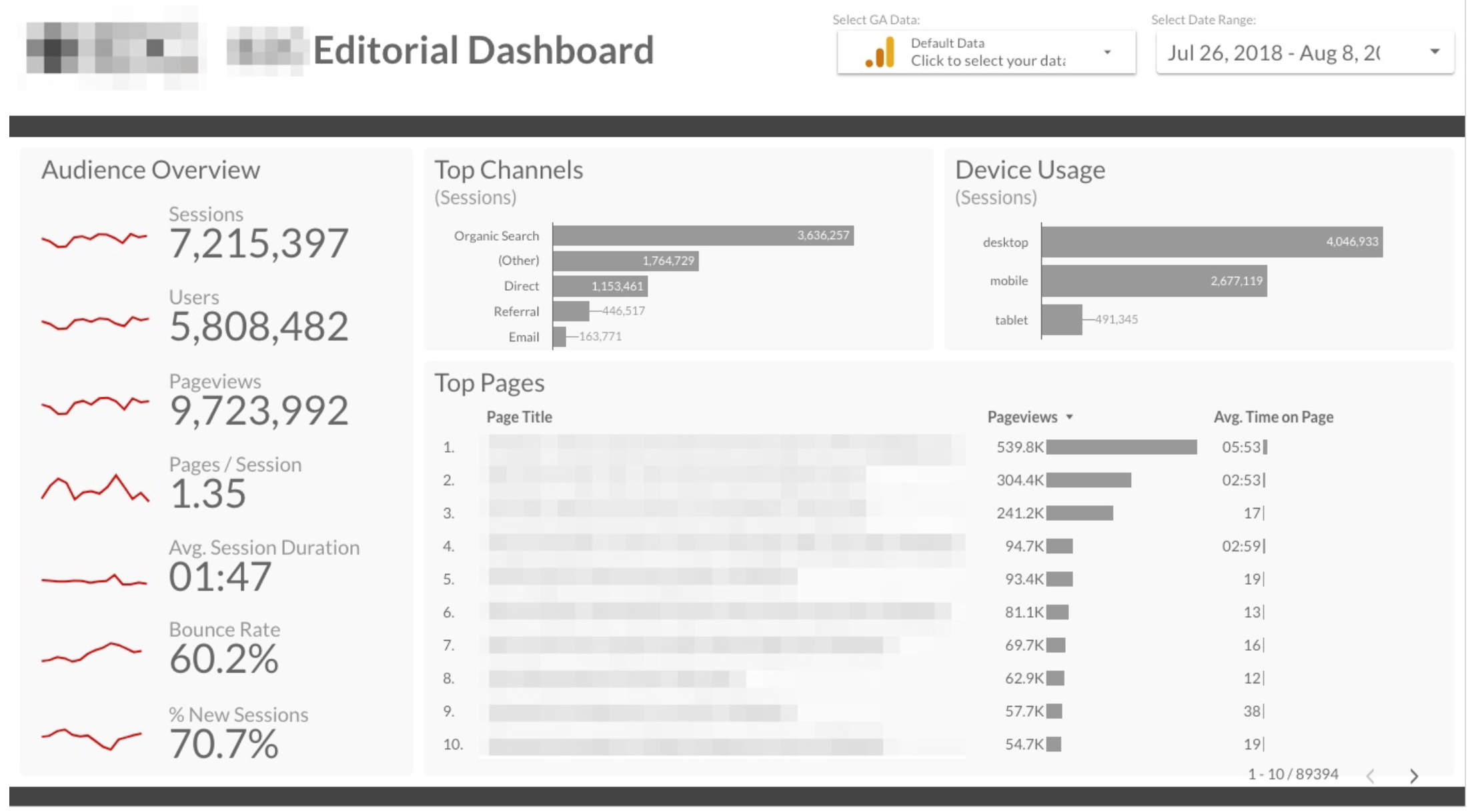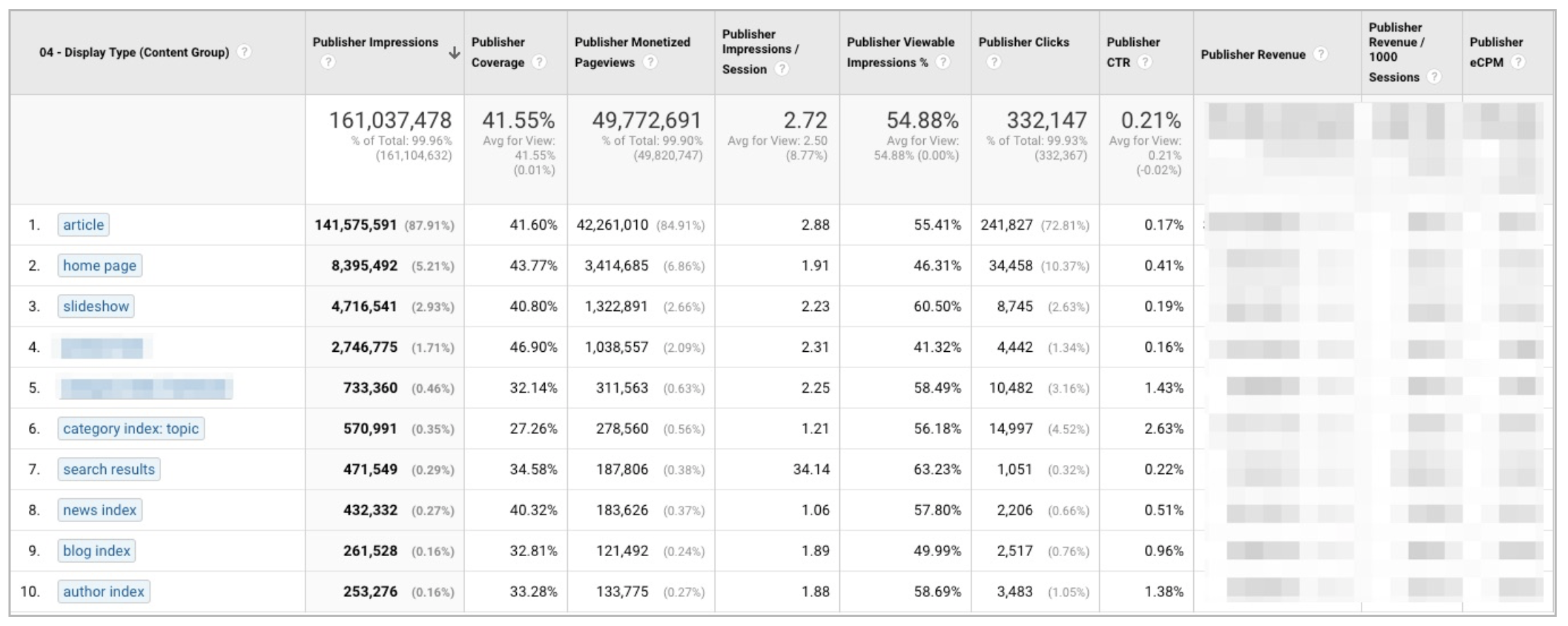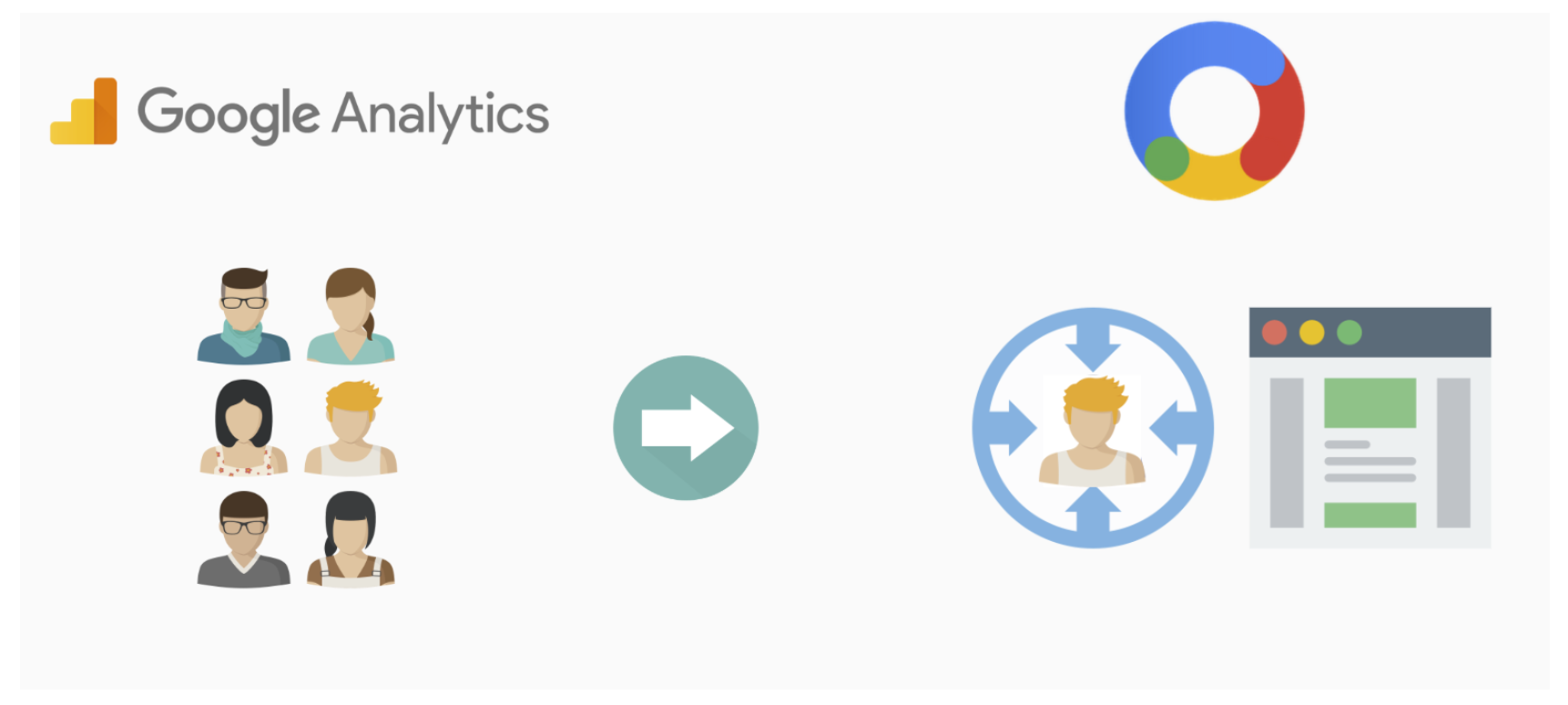At InfoTrust, we work with many large media publishers to improve their digital analytics capabilities. This can involve working with the publishers to move them from one platform to another, improve their data architecture and collection, integrate tools and platforms, and providing more advanced analysis and data science capabilities.
Through these experiences, we’ve seen some common issues publishers have when it comes to their digital analytics practices and capabilities. In this post, I’m going to outline some of those issues and how to start fixing them right now.
Issue #1: No Data Consistency Across Brands/Properties
The issue we see the most is a lack of data consistency across brands, properties and platforms. When it comes to the digital analytics data being collected, many times each brand, property, platform, etc. are collecting data that only they need. There is no unified tracking architecture.
Many times, publishers acquire other brands and properties which use different tools with legacy tracking set up, and unless there is a standardization project, the legacy tracking will remain.
Also, different brands and websites might operate independently in different countries or regions. So BrandA.com in the US operates separately from BrandA.co.uk in the United Kingdom. Different budgets, different tools, different architecture. But still the same company/organization.
So what’s the solution here? Well, it’s creating a consistent, uniform tracking architecture across the organization’s properties. Sounds easy, right?
Unfortunately, not really. You’ll need to work with each brand/market to determine their data requirements across their platforms and then determine the enterprise-level data required as well. The larger the organization, the more teams/markets involved, the more work involved.
Also, it’s important to choose the enterprise-level analytics tool and require each brand/market to adopt that tool along with the new global tracking architecture. This will require considerable development work to ensure each brand/market is on the same tool, using the same global tracking architecture.
Issue #2: No Ability to Do Enterprise-Level Reporting Across Brands/Properties
Another large issue we run into is the lack of ability to do enterprise-level reporting. And what I mean by that is having reports and dashboards across the organization that show high-level metrics for all the owned web and app properties.
For instance, do you have a dashboard that shows you the top 10 web and app properties in terms of Users? Sessions? Pageviews?
Can you easily see which sites or apps have the most engagement compared to the rest? Only a few of the enterprise-level web analytics tools, like Google Analytics 360, can handle roll-up reporting (and without requiring any site or app retagging!). This makes roll-up reporting quick and easy, allowing you to answer those enterprise-level questions.

Example enterprise dashboard for a large publisher. Data source is a Google Analytics 360 rollup property of all US sites and dashboard was built in Google Data Studio.
Also, going back to Issue #1, even if you can roll up your different platforms/properties, if your organization doesn’t have a global tracking architecture, you’ll be stuck reporting on fairly basic metrics. You want to make sure each website and app is collecting the exact same data to ensure you can fully report across them.
If 10/20 sites are collecting ‘author’ for articles and the other 10 aren’t, how are you going to report on the top authors across those 20 sites? You aren’t.
So, if this is a problem, handle Issue #1 first.
Issue #3: Analytics Tools Can Get Very Expensive for Organizations with High Site/App Traffic
Most analytics tools charge by traffic volume (often referred to as hits - pageviews or events), so for large publishers that get billions of pageviews a month across their properties, that can get very, very expensive.
Unfortunately, there is not really a “change the pricing model” solution here. You have to work with what you've got. So, how can you keep your tool’s monthly expenses in check?
The answer is fairly simple. You need to manage your analytics tracking with a focus on tracking the important user interactions efficiently. But how do you do that? Well, here are a few ideas:
1. Create a tracking and measurement plan
This goes back to Issue #1. Only track what is important to track for both the local brand/market and the global organization. Many times, development agencies won’t get any instruction from the company and therefore will track as much as they can think of to track. Do you really need to know how many times someone clicked on each of your links in the footer? Probably not. So don’t track that unless it is a requirement from the brand/market or the global organization.
And ask each brand/market to explain why it’s important to track and what they plan on doing with the data. Many times they’ll have no answer - and in and of itself, there is your answer. It’s not necessary to track.
2. Use efficient tracking methods that are well-thought out
If you’re tracking user interactions like how far down on the page a user is scrolling (scroll depth), or how long a user is watching a video, the typical tracking method is to send a hit for each quartile of the page scrolled or quartile of the video watched. However, these hits add up.
For instance, if a user scrolls 100% of the page and you’re sending a hit for each quartile they scrolled, that’s four hits just for that user, just on that one page.
A solution to that is to not track each quartile. Consolidate that tracking to only include the furthest quartile scrolled. You’re still getting the data you want in that you know how far down the user made it on the page, but you’re saving hits in the process.
Same idea for video duration tracking. If you’re tracking the quartiles of a video watched, only tracked the furthest quartile of that video viewed. No need to send multiple events. You most likely only care about how far they made it into the video.
Hopefully some of these ideas start to get your mind working on how you might consolidate or even possibly eliminate some unnecessary tracking on your sites and apps, saving you money (and most likely stress) in the process.
Issue #4: Lack of Insight into What Content is Driving the Most Advertising Revenue
Issue #4 is one that some publishers don’t even realize they have. Do you know how much advertising revenue each piece of your content is earning for your bottom line? And can you categorize and segment that content to see which types are your most lucrative?
If you answer “no” to either of those questions, you might have some explaining to do to your bosses.
As a publisher, your main revenue stream is coming from advertising. Nothing shocking here. But, what if you were able to identify your top performing content, optimize and produce more of that content, and ultimately increase the advertising revenue your site brings in? Would your bosses be happy then?
When it comes to most large publishers, Google Ad Manager (formerly DoubleClick for Publishers) is the tool being used to deliver the majority of ads on publishers’ sites across the Google Display Network. Because it’s so ubiquitous, being able to integrate your Google Ad Manager data (impressions, clicks, CTR, revenue, etc.) into your web analytics tool is crucial to understanding your top content.
However, when it comes to actual web analytics tools that have a Google Ad Manager integration, the only one is (naturally) Google Analytics 360. This gives Google Analytics 360 an advantage on the competition when it comes to publishers wanting to understand their ad revenue data along with their web analytics data.
The GA 360 integration with Ad Manager allows a publisher to bring in Ad Manager metrics, like Impressions, Clicks, CTR, and Revenue, into Google Analytics to match up those metrics with GA dimensions like Page (URL) and any additional custom dimensions they’re collecting.

In the example screenshot below, this is a Google Analytics 360 Custom Report for a large publisher that is utilizing the GA 360 - Google Ad Manager integration along with a Content Group for Display Type. (Revenue data redacted)

This will give you valuable insight into how your content is performing not just in terms of pageviews, but in actual advertising revenue.
Issue #5: Inability to Deliver Targeted Audiences to Advertisers
The last issue is one that publishers have been grappling with for years. Advertisers are becoming increasingly sophisticated in the targeting of audiences on publishers’ websites. The advertisers want to be able to show ads to site visitors based on demographic info, psychographic info, and site engagement.
For example, a video game streaming service like Twitch might want to show ads on gaming websites where visitors are between the ages of 18-34 and male, but also only to visitors that visit the site more than three times per week. They might consider these “high value” targets that might be much more inclined to spend money on the Twitch platform.
In this specific example, a publisher most likely wouldn’t be able to use an ad server like Google Ad Manager to deliver that granular of an audience to an advertiser.
This leads many publishers to utilize a Data Management Platform (DMP) to make these type of targeted audiences available. These DMP’s allow you to collect both first-party and third-party data to build much more granular audiences for advertisers to bid on.
A few of the popular DMP’s in the space are Lotame, Krux, Turn, Oracle’s DMP and Nielsen’s DMP.
While DMP’s allow for much more granular audiences, they also require a lot of upfront implementation and set up work. And come at an additional cost, as well. So, a great option, but you must have the time, technical knowledge and budget to implement a DMP.
If you aren’t interested in going down the DMP route just yet, Google Analytics 360’s integration with Google Ad Manager can act as a scaled-down but still effective version of a DMP. With the integration, you can create audiences in GA based on visitor behavior on your site and then send those audiences to Ad Manager for advertisers to bid on.

So, for advertisers looking to target visitors that display certain types of behavior or engagement across a site, like visiting certain pieces of content or spending a certain amount of time on the site, these audiences can be created in GA using GA data and then sent to Ad Manager. Pretty valuable if you want to create these more granular audiences but can’t implement a DMP at this point in time.
Conclusion
I’ve walked you through five of the more common issues we’ve seen publishers face. Hopefully, this post has given you some ideas for how you can tackle these issues if you’re currently facing them.
If you would like to chat more about our knowledge of the industry or specifically around how we might be able to help you, please reach out to us!
And if you’re suffering from any other major issues that I haven’t listed, definitely let me know in the comments. I’d love to hear from you!











